- Design Approaches
- Posted
Access All Areas

Following the proposal of a new Disability Bill 2003 by Justice Minister Michael McDowell, it is difficult to separate doubt from optimism. The Bill is to be conditional, with McDowell refusing to publish a rights-based legislation on the grounds of possible lawsuits from those arguing deficient services. If the Disability Bill 2003 does indeed advance it will mean that the government will face an obligation to act on its pledge and hence greatly improve current access conditions. However many groups remain sceptical about the likelihood of the Bill taking effect after similar legislation was retracted last year.
In the aftermath of the Special Olympics it would be understandable to assume that we, a country that welcomed these athletes with open arms would have made a concerted attempt to re-evaluate our previous attitudes towards people with disabilities. Unfortunately social segregation is still rampant, and whilst many of us do make an effort to better understand the needs of people with disabilities some of us simply miss the point.
People with disabilities do not want sympathy; they want to be included, as does every other member of society. Over 10% of Ireland’s population have some form of disability, whether it be visual or hearing impairments, learning disabilities, mental health difficulties, mobility impairment, or other, and their position is only made more difficult by the fact that the general public and government ceaselessly, often unintentionally excludes them.
The issue of public access, or more aptly lack of public access, is one that greatly impedes and affects people with disabilities throughout Ireland. It is primarily the government’s past failure to provide sufficient regulations and funding for appropriate services that is responsible for this problem, however considerable onus also lies upon particular architects who neglect to see an avenue for creativity and innovation in accessible design and therefore view an ‘accessible’ structure as one that includes a disabled toilet.
The Architectural Association of Ireland have said that Part M of the Building Regulations, Access for People with Disabilities (January 2000), was ‘conceived as a document of minimum standards’. While Part M does illustrate an attempt to improve access, it is exclusive, resulting in further social disunion. Through severing the needs of people with disabilities and the ‘able’ bodied the government have shown that they do not adequately recognise the social issue attached to access. Perhaps in time, an appropriate measure would be to consider the regulations overall with reference to access for everyone, rather than allocating just one section to people with disabilities. Indeed, this is a notion that may never be realised due to the somewhat oblivious attitudes the government appears to possess.
Through depriving members of society with disabilities of something as vital as access we are also detaching them from our culture. As the National Disability Authority (NDA) reported last year on their website, ‘People with disabilities deserve as much as others to gain access to our architectural heritage and the services it contains. Without their contribution, the heritage we pass on to future generations will be impoverished unnecessarily. Similarly, an environment which does not welcome all potential users compromises its meaning as a place of cultural significance’. The NDA feels that ‘people are unlikely to value that from which they feel excluded’ and thus such places of historical importance will inevitably lose their poignancy.
In the aftermath of the Special Olympics it would be understandable to assume that we, a country that welcomed these athletes with open arms would have made a concerted attempt to re-evaluate our previous attitudes towards people with disabilities. Unfortunately social segregation is still rampant, and whilst many of us do make an effort to better understand the needs of people with disabilities some of us simply miss the point.
People with disabilities do not want sympathy; they want to be included, as does every other member of society. Over 10% of Ireland’s population have some form of disability, whether it be visual or hearing impairments, learning disabilities, mental health difficulties, mobility impairment, or other, and their position is only made more difficult by the fact that the general public and government ceaselessly, often unintentionally excludes them.
The issue of public access, or more aptly lack of public access, is one that greatly impedes and affects people with disabilities throughout Ireland. It is primarily the government’s past failure to provide sufficient regulations and funding for appropriate services that is responsible for this problem, however considerable onus also lies upon particular architects who neglect to see an avenue for creativity and innovation in accessible design and therefore view an ‘accessible’ structure as one that includes a disabled toilet.
The Architectural Association of Ireland have said that Part M of the Building Regulations, Access for People with Disabilities (January 2000), was ‘conceived as a document of minimum standards’. While Part M does illustrate an attempt to improve access, it is exclusive, resulting in further social disunion. Through severing the needs of people with disabilities and the ‘able’ bodied the government have shown that they do not adequately recognise the social issue attached to access. Perhaps in time, an appropriate measure would be to consider the regulations overall with reference to access for everyone, rather than allocating just one section to people with disabilities. Indeed, this is a notion that may never be realised due to the somewhat oblivious attitudes the government appears to possess.
Through depriving members of society with disabilities of something as vital as access we are also detaching them from our culture. As the National Disability Authority (NDA) reported last year on their website, ‘People with disabilities deserve as much as others to gain access to our architectural heritage and the services it contains. Without their contribution, the heritage we pass on to future generations will be impoverished unnecessarily. Similarly, an environment which does not welcome all potential users compromises its meaning as a place of cultural significance’. The NDA feels that ‘people are unlikely to value that from which they feel excluded’ and thus such places of historical importance will inevitably lose their poignancy.
With the National Disability Authority’s release of the book ‘Building for Everyone’ in 2002 an opportunity was given for architects, designers, building developers and managers, building control and planning personnel, local authorities, environmental activists, and the general public alike to consider implementing affordable improvements to access in domestic and public structures. Building for Everyone ‘confirms that for little or no cost, buildings and the external environment can reach standards far in advance of even the best and most creative current practice’.
Chairperson of the NDA, Angela Kerins, stated upon Building for Everyone’s launch that ‘everyone deserves equal consideration from those who commission, design, construct and manage buildings and the environment’. It is her belief that ‘the universal right of access seeks to improve accessibility and usability for everyone and ensures that people with impaired sight, mobility or hearing can participate fully in society. If this gives rise to an initial extra cost, the benefits which accrue through the lifespan of a building can far outweigh the outlay. It is important to note that the cost of providing facilities when a building is being constructed is usually very much less than that of adding the same facilities after the building has been completed. When accessibility and usability for everyone becomes the norm we will truly be building for everyone’.
Chairperson of the NDA, Angela Kerins, stated upon Building for Everyone’s launch that ‘everyone deserves equal consideration from those who commission, design, construct and manage buildings and the environment’. It is her belief that ‘the universal right of access seeks to improve accessibility and usability for everyone and ensures that people with impaired sight, mobility or hearing can participate fully in society. If this gives rise to an initial extra cost, the benefits which accrue through the lifespan of a building can far outweigh the outlay. It is important to note that the cost of providing facilities when a building is being constructed is usually very much less than that of adding the same facilities after the building has been completed. When accessibility and usability for everyone becomes the norm we will truly be building for everyone’.

In describing how simple it can be to improve access Ms Kerins gives several practical examples:
‘A smooth circular doorknob will be very difficult to use if a person has poor grip. Even a single step can make entry for a person pulling a suitcase on wheels, or a person using a wheelchair, almost impossible. If the first and last step of a flight is clearly marked, a person with impaired sight will find stairs easier to use. An induction loop in a busy environment will enable communication with people whose hearing is impaired. An easily accessible seat at the cinema will facilitate someone using crutches or a wheelchair. A threshold with no step provides access for everyone. None of these provisions is costly’.
On July 15, 2003, following the announcement of an intended 50 million Euro package for people with disabilities within 2003/2004, Minister for Health and Children, Michael Martin TD stated ‘The allocation of an additional 50 million Euro is evidence of the government’s commitment to these services and to supporting people with disabilities and their families’. Although this appears to be a positive and much needed action by the government, it is unclear whether these funds will be put to best possible use. 15 million Euro is said to go to ‘emergency placement services, young adult day services and health related support services for persons with intellectual disability and those with autism’. 5 million Euro is to be assigned to ‘services for people with physical or sensory disabilities to meet service pressure as identified by the Eastern Regional Health Authority and the health boards in consultation with other relevant agencies’; and 30 million Euro is to be designated to the Eastern Regional Health Authority and the health boards ‘in respect of minor capital works in services for people with disabilities (to upgrade existing facilities)’. While all such services are undoubtedly important the question of improving access throughout the country to a sufficient standard remains.
The Barcelona Declaration, initiated in April 1995 at the European City and the Disabled Conference, is based around the conviction that ‘Every person has a value and a right to be treated with dignity’. The declaration acts around 17 agreements that are summarised as follows:
Promotion: Promote disability awareness and ensure the rights of people with disabilities to be different and their right to receive personal attention
Policies and Measures: Develop policies and an equality/disability proof decision making process.
Consultative process: Develop consultative process
Inclusion and Accessibility: Provide people with disabilities access to the social and physical environments as well as services
Training: Provide training programmes dealing with equality/disability issues
Analysis and Assessment: Develop monitoring, evaluation and impact assessment procedures for actions, projects and policies regarding equality/disability issues
‘A smooth circular doorknob will be very difficult to use if a person has poor grip. Even a single step can make entry for a person pulling a suitcase on wheels, or a person using a wheelchair, almost impossible. If the first and last step of a flight is clearly marked, a person with impaired sight will find stairs easier to use. An induction loop in a busy environment will enable communication with people whose hearing is impaired. An easily accessible seat at the cinema will facilitate someone using crutches or a wheelchair. A threshold with no step provides access for everyone. None of these provisions is costly’.
On July 15, 2003, following the announcement of an intended 50 million Euro package for people with disabilities within 2003/2004, Minister for Health and Children, Michael Martin TD stated ‘The allocation of an additional 50 million Euro is evidence of the government’s commitment to these services and to supporting people with disabilities and their families’. Although this appears to be a positive and much needed action by the government, it is unclear whether these funds will be put to best possible use. 15 million Euro is said to go to ‘emergency placement services, young adult day services and health related support services for persons with intellectual disability and those with autism’. 5 million Euro is to be assigned to ‘services for people with physical or sensory disabilities to meet service pressure as identified by the Eastern Regional Health Authority and the health boards in consultation with other relevant agencies’; and 30 million Euro is to be designated to the Eastern Regional Health Authority and the health boards ‘in respect of minor capital works in services for people with disabilities (to upgrade existing facilities)’. While all such services are undoubtedly important the question of improving access throughout the country to a sufficient standard remains.
The Barcelona Declaration, initiated in April 1995 at the European City and the Disabled Conference, is based around the conviction that ‘Every person has a value and a right to be treated with dignity’. The declaration acts around 17 agreements that are summarised as follows:
Promotion: Promote disability awareness and ensure the rights of people with disabilities to be different and their right to receive personal attention
Policies and Measures: Develop policies and an equality/disability proof decision making process.
Consultative process: Develop consultative process
Inclusion and Accessibility: Provide people with disabilities access to the social and physical environments as well as services
Training: Provide training programmes dealing with equality/disability issues
Analysis and Assessment: Develop monitoring, evaluation and impact assessment procedures for actions, projects and policies regarding equality/disability issues
Clearly there is an increasing requirement on decision makers in the public and private sectors to include considerations of accessibility into existing and proposed structures. The effects of disability are felt throughout society, and as Angela Kerins recognises, ‘we will all grow old and be grateful for an environment that has been planned to include us’. The irony is that those who neglect to provide adequate facilities for disabled people may only appreciate the value of access when, through age or circumstance, it is denied to them in their own time of need.
Those who wish to take immediate action with regards to improving access in the built environment should consult the following specialist companies, contact the National Disability Authority or seek advice from one of the following websites:
The Institute for Design and Disability
Barcelona Declaration Project
National Disability Authority
T: (01-6080400) or Email This email address is being protected from spambots. You need JavaScript enabled to view it.
- Disability Bill 2003
- design
- Justice Minister
- Michael McDowell
- people with disabilities
- hearing impairments
- learning disabilities
- mental health difficulties
- mobility impairment
- services
- Access
Related items
-
 International passive house conference kicks off
International passive house conference kicks off -
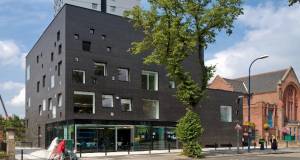 RIBA calls for more post occupancy evaluation
RIBA calls for more post occupancy evaluation -
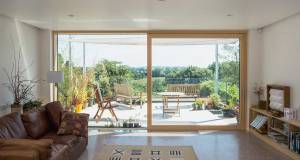 Site specific - Somerset passive house adapts to tight plot
Site specific - Somerset passive house adapts to tight plot -
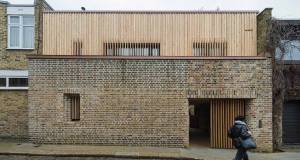 Legendary engineer builds engine-less home
Legendary engineer builds engine-less home -
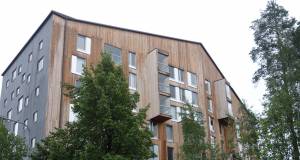 Reflections on sustainable Nordic architecture
Reflections on sustainable Nordic architecture -
 Stunning Cork passive house heads list of Isover award winners
Stunning Cork passive house heads list of Isover award winners -
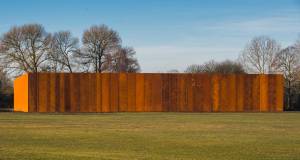 Imperial War Museums archive breaks airtightness record
Imperial War Museums archive breaks airtightness record -
 Buildings need better overheating models to guarantee future comfort
Buildings need better overheating models to guarantee future comfort -
 The utopian Usonian
The utopian Usonian -
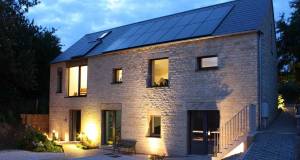 Slope and glory
Slope and glory -
 South Dublin passive house rises out of the ordinary
South Dublin passive house rises out of the ordinary -
 Daikin pick up five honours at the iF Design Awards
Daikin pick up five honours at the iF Design Awards

